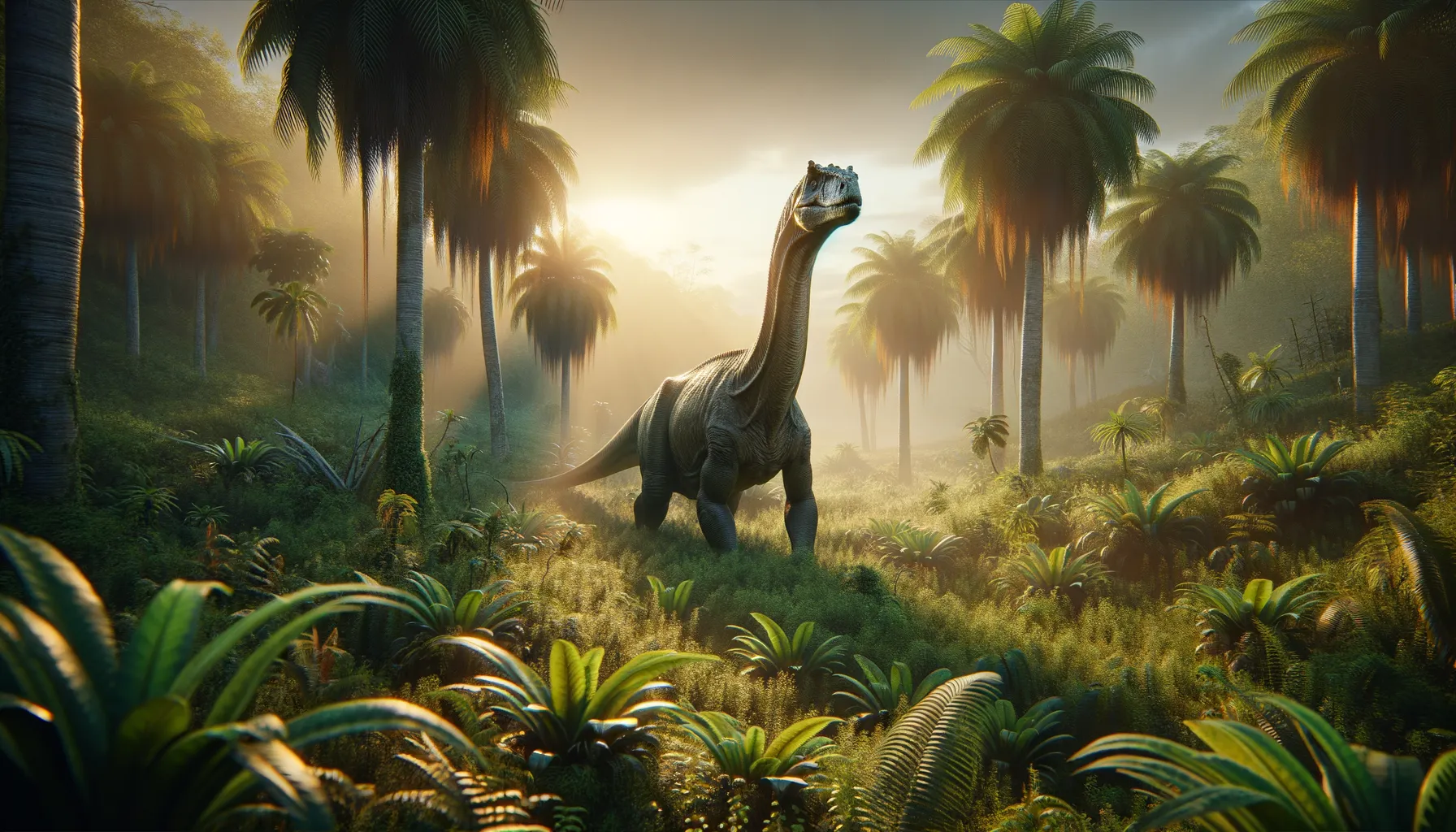
Jiutaisaurus
Majestic giant of the ancient past.
Period
Cretaceous
Length
Likely over 15 meters long, similar to other large sauropods.
Height
Could reach the height of a multi-story building.
Weight
Estimated to weigh several tons, like other sauropods.
Jiutaisaurus was a massive sauropod dinosaur that roamed the earth during the Cretaceous period. Known for its long neck, it likely inhabited areas rich in vegetation where it could feed on tall plants. Its fossils were first discovered in China, providing valuable insights into the diverse dinosaur population of the region. Despite its formidable size, much about Jiutaisaurus remains a mystery, making it an exciting topic for paleontologists.
Diet
Jiutaisaurus was an herbivore that fed on a variety of vegetation. Its diet likely included leaves, branches, and possibly lower-level foliage when young. Its long neck would help it reach high vegetation that many other herbivores could not access.
Hunting
As a herbivore, Jiutaisaurus did not hunt. Instead, it focused on browsing for plant material. Its size would deter most predators, allowing it relative safety while feeding.
Environmental challenges
Jiutaisaurus would have faced environmental challenges such as seasonal changes that impacted vegetation availability. Competition with other herbivores for food resources might have been an issue. Water sources would also be crucial, especially during dry seasons. Predators, although less of a threat due to its size, could still pose a danger to the young or sick individuals.
Speed
Jiutaisaurus likely moved slowly due to its large size.
Lifespan
It is estimated to have lived several decades.
First discovery
Discovered in the 2000s in China.
Fun Facts
- Jiutaisaurus was a long-necked dinosaur that lived during the late Cretaceous period.
- This dinosaur was discovered in the Jiutai region of China, which is how it got its name.
- Jiutaisaurus was a herbivore, meaning it primarily ate plants.
- The fossils of Jiutaisaurus were first unearthed in the 1970s, but it took several decades to study and name them.
- Jiutaisaurus is a sauropod, a group known for their massive size and long necks, similar to the more famous Brachiosaurus.
- Despite its impressive size, Jiutaisaurus was likely a slow-moving dinosaur.
- The discovery of Jiutaisaurus has helped scientists understand more about sauropod diversity in Asia.
Growth and Development
Jiutaisaurus likely experienced rapid growth in its early years to reach its enormous size. Like many large dinosaurs, it developed massive bones and muscles to support its weight. This growth would require substantial food intake daily. Young individuals would have been more vulnerable to predators until reaching a safer size.
Habitat
Jiutaisaurus inhabited regions with abundant vegetation possibly near riverbanks or forested areas. Its environment would need to support a massive herbivore population, suggesting lush plant life. Seasonal variations would alter the landscape, impacting food and water supply. Its habitat would have been shared with other dinosaur species, fostering a diverse ecosystem.
Interaction with other species
Jiutaisaurus likely coexisted with a variety of dinosaurs, both herbivores and carnivores. It might have had to defend itself and its young from predators. Its massive size would offer protection, allowing it to assert dominance in feeding areas. Cooperation with others of its kind might have occurred, particularly for migration or defending against threats.
Natural lifespan
They had a natural lifespan potentially exceeding 50 years.
Reproduction
Jiutaisaurus likely laid eggs, similar to other sauropods. Eggs would be buried in nests made of vegetation or soil for protection against predators. Juveniles were probably independent shortly after hatching, but parental care might have included guarding the nest. Reproduction would be a slow process due to their lengthy maturation period.
Social behaviour
Jiutaisaurus might have lived in groups or herds, offering protection and assistance in locating food. Social interactions could include group feeding and protection of young. Herds would migrate together, seeking out optimal feeding grounds. Strong social bonds would benefit survival, particularly in harsh or changing environmental conditions.
Fossil locations
Fossils of Jiutaisaurus have been found in northeastern China. These discoveries provide an important glimpse into the dinosaur's way of life and environmental conditions of the time. Fossil evidence is still limited, contributing to the ongoing research to uncover more about this dinosaur's history.
